Alaviyan Dome | A Historic 12th-Century Mausoleum in Hamadan
The Alaviyan Dome in Hamadan is a captivating example of Persian architecture, and offers a fascinating glimpse into the rich history of medieval Iran.
Originally constructed during the Seljuq dynasty in the 12th century, this structure began as a mosque crowned with a grand green dome where the Alaviyan family conducted their religious rites. Unfortunately, the original dome collapsed over time, leading to a significant transformation of the building.
The Alaviyan Dome was later repurposed as a mausoleum for the Alavian family, with two prominent members of the family interred in tombs within the building's cellar.
Access to the mausoleum is via nine stone steps, leading visitors into an interior adorned with intricate stucco decorations. The walls are covered in mesmerizing plant and floral motifs, showcasing the mystic artistry of the period. Although some designs have worn with age, their beauty remains strikingly evident.
In December 1931, the mausoleum was officially listed as a national monument, preserving its historical and architectural significance. The structure’s brick tower, noted for its whirling floral stucco added during the Ilkhanid Mongol era, remains a notable feature.
Despite the removal of the original green dome, the Alaviyan Dome continues to captivate visitors with its historical charm and artistic heritage. In this blog, we will delve into the history, architecture, location, best times to visit, and everything else you need to know about the Alaviyan dome.
About Alaviyan Dome
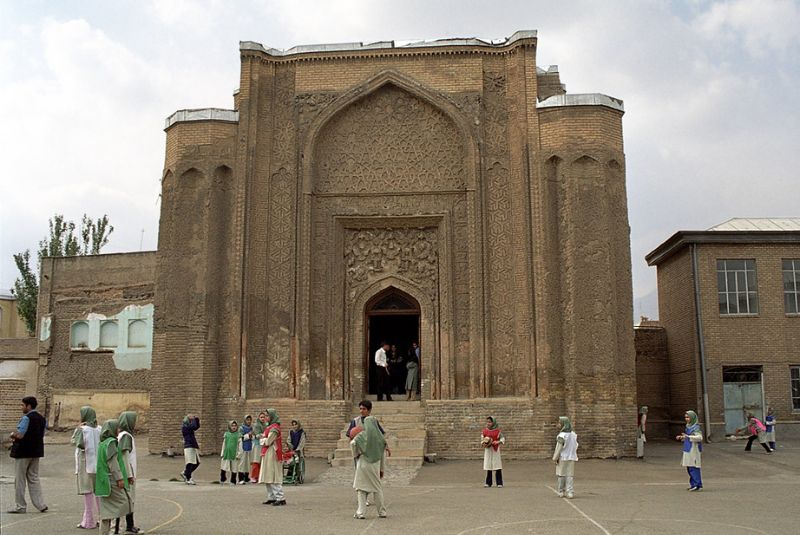
The Alaviyan Dome, also known as Gonbad-e-Alavian, is a notable 12th-century mausoleum located in Hamadan, Iran. Originally built during the Seljuk dynasty, this historic site was initially designed as a mosque.
The building once featured a striking green dome, famously referred to by the poet Khaqani as "the green dome." Unfortunately, this dome has long since collapsed, but the remaining structure continues to captivate visitors with its architectural beauty. In 1932, the Alaviyan Dome was officially listed as an Iranian national heritage site, marking its significance in the country's cultural history.
The mausoleum is renowned for its exquisite Persian architecture, exemplified by its intricate stucco decorations and floral motifs. Nine stone steps lead visitors into the building, where the interior showcases a captivating interplay of plant and floral patterns.
The dome was redesigned as a mausoleum for the Alavian family, with two prominent family members buried in the crypt beneath the structure. The plain-blue-tiled tombs and the elaborate stucco work from the Ilkhanid Mongol era, described by Robert Byron in Road to Oxiana, add to the site’s historical allure. Despite some wear over the years, the Alaviyan Dome remains a significant architectural and cultural treasure in Hamadan.
Alaviyan Dome History
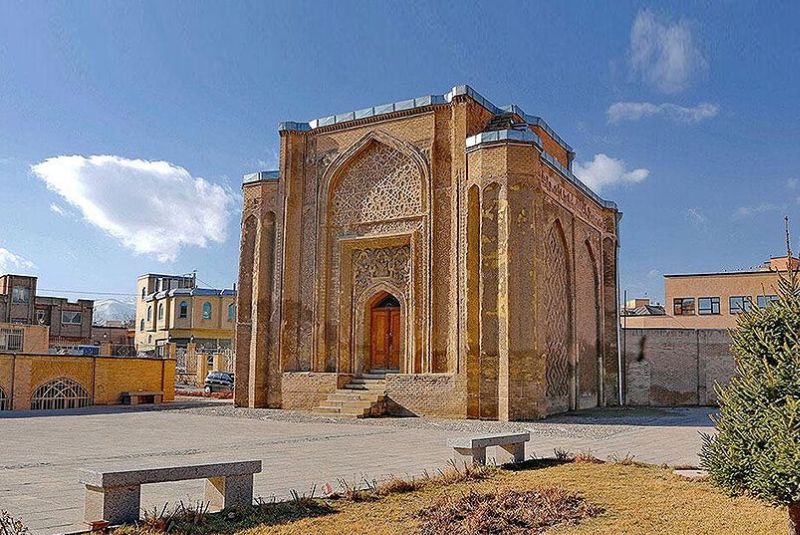
The Alaviyan Dome in Hamadan was constructed in the late Seljuk period during the 12th century. Originally built by the Alavian family, the structure served as a mosque for their religious ceremonies.
Over time, the dome evolved in its role and significance. In subsequent centuries, it was repurposed by later rulers, and a subterranean crypt was added, where the tombs of the Alavian family members are now located. Throughout the years, the dome suffered from wear and tear, leading to significant deterioration.
In 1938, under the directive of Reza Shah and with the cooperation of the Department of Archaeology, the Alaviyan Dome underwent extensive restoration. The roof was covered with wood and metal sheeting to protect it from the elements.
Today, the Alaviyan Dome is situated on a raised platform, accessible by nine steps leading up to its entrance. It is now preserved and protected by the Cultural Heritage Organization and has become a must-visit historical site for travelers to Hamadan.
Why is it Named the Alaviyan Dome?
The Alaviyan Dome's name might seem puzzling at first glance, as the structure currently lacks a visible dome. Originally, the building featured a dome, but by 1938, it had deteriorated, and the original domed roof was replaced with a flat one for protection. Despite this change, the name "Alaviyan Dome" endures.
The name originates from the fact that two members of the Alavian family are buried in the crypt beneath the structure. Historically, the building was referred to as the Alaviyan Dome due to these important burials. Today, the mausoleum retains its traditional name, reflecting its historical and familial significance.
Alaviyan Dome Architecture
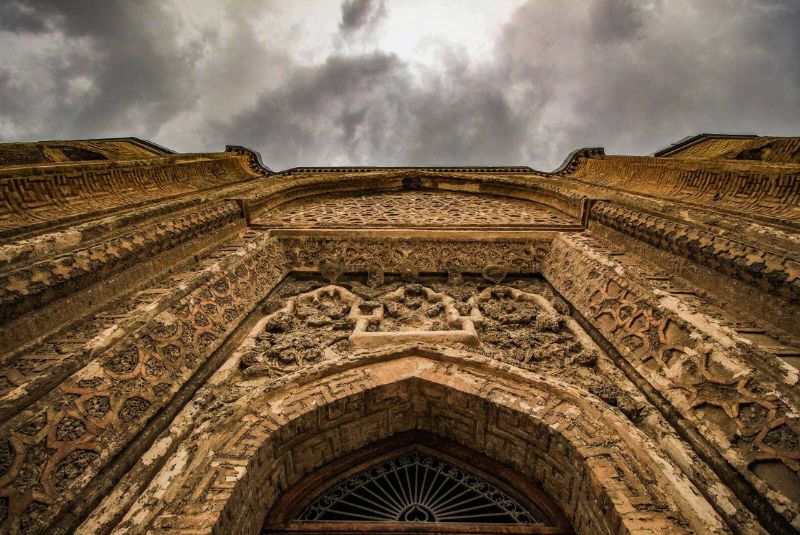
The Alaviyan Dome, an architectural marvel located in Hamadan, Iran, showcases some of the most exquisite examples of Persian art and architecture from the medieval period. Constructed during the late Seljuk era in the 12th century AD, it is renowned for its intricate stucco work and brick decorations.
The Alaviyan Dome is designed as a cubic structure, measuring 8.12 by 5.12 meters with a height of 5.11 meters. Four monumental pillars, each approximately 5.9 meters high and 2 meters in diameter, flank the corners of the building, resembling towers.
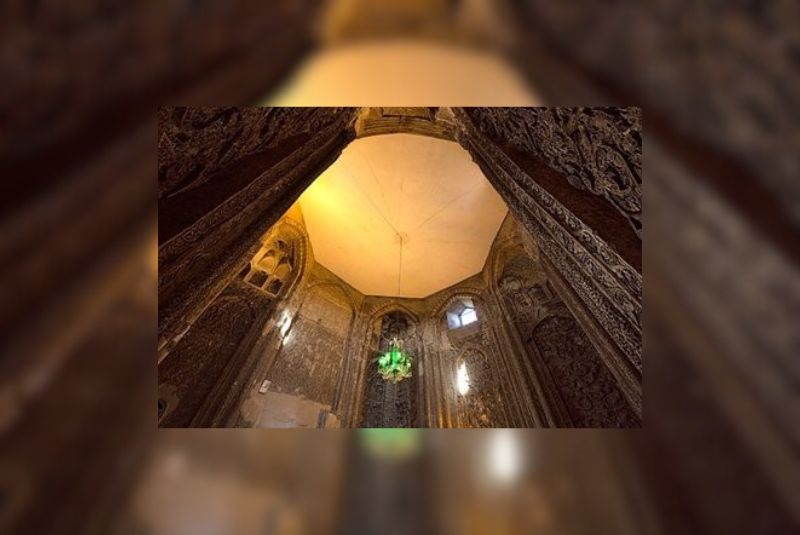
These pillars are adorned with five recessed triangular niches, each 8 meters tall, 1 meter wide, and half a meter deep, which collectively form half of an eight-pointed star in cross-section. Notably, a pointed archway on the northern side of the building reaches 10 meters in height and about 5.5 meters in width, featuring a prominent rectangular frame.
Entrance and Facade
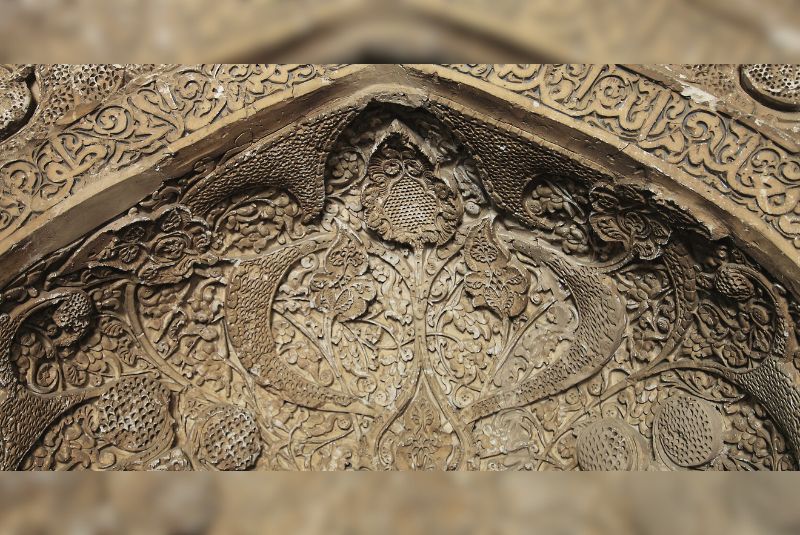 The entrance to the Alaviyan Dome is particularly striking, characterized by a pointed arch with a width of 6.1 meters and a height of 4.3 meters. Above the entrance, the rectangular frame is embellished with elaborate stucco work featuring honeycomb patterns and intertwined floral motifs.
The entrance to the Alaviyan Dome is particularly striking, characterized by a pointed arch with a width of 6.1 meters and a height of 4.3 meters. Above the entrance, the rectangular frame is embellished with elaborate stucco work featuring honeycomb patterns and intertwined floral motifs.
Surrounding this frame is a frieze of Quranic verses inscribed in Kufic script. The triangular and star-shaped stucco decoration above the arch adds a unique touch to the facade.
Pillars and Niches

The space between the pointed arch and the surrounding towers is adorned with two rectangular panels, each 80 centimeters wide and flush with the building's surface, decorated with stucco carvings.
Additionally, there are two semi-circular panels decorated with regular and irregular brickwork. The western and eastern sides of the building each feature two pointed arches, 5.8 meters tall and 4 meters wide, with intricate brick relief designs forming diamond-shaped patterns.
The remnants of a Kufic inscription from the early verses of Surah Al-Insan are visible above the arches and on the ends of the towers. A narrow staircase in the northeastern tower provides access to the roof.
Shabestan (Prayer Hall)
The Shabestan, or prayer hall, is elevated 2.1 meters above the surrounding ground and is accessed via seven steps. The interior of the Shabestan is enhanced by two tall niches and two pointed arches on the western and eastern sides, all covered with intricate stucco designs.
The southern wall features a richly decorated mihrab (prayer niche), contributing to the Shabestan's overall splendor. High windows near the ceiling provide ample illumination for the interior space.
Crypt
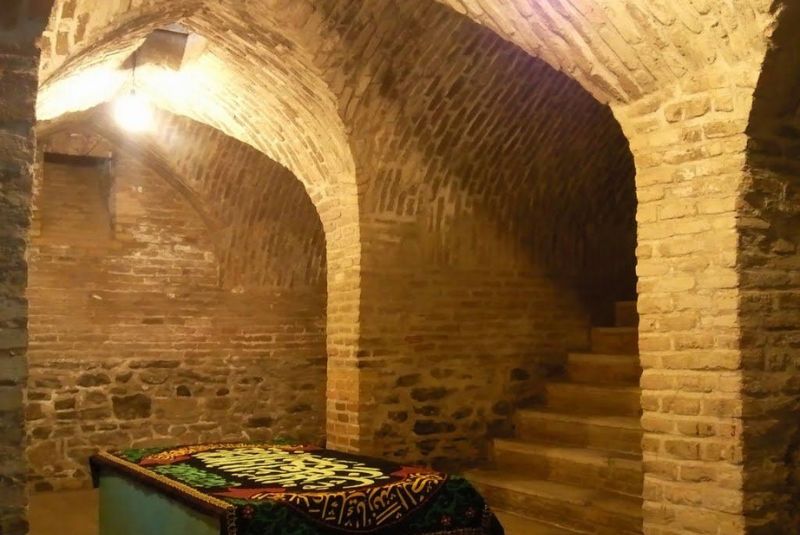
A unique staircase, inconspicuously integrated into the mihrab, leads to the lower crypt. This small underground chamber serves as the final resting place for two prominent members of the Alaviyan family.
The crypt features six alcoves with pointed arches, and the tombs are rectangular, covered with turquoise-glazed bricks. The space is a poignant and significant part of the mausoleum, underscoring the building's historical and familial importance.
Alaviyan Dome Location
The Alaviyan Dome is located in Hamadan, in the Alaviyan Four Gardens area, close to Imamzadeh Abdullah Square. It is one of the key attractions in Hamadan. The dome is situated to the north along a street connecting Ain al-Qudat Square to Imamzadeh Abdullah Square.
To the south, it is bordered by Baba Taher Street, and to the east by Ekbatan Street. This historic site, distinguished by its unique architectural features and intricate stucco work, is a must-visit landmark in the city.
How to Get to the Alaviyan Dome
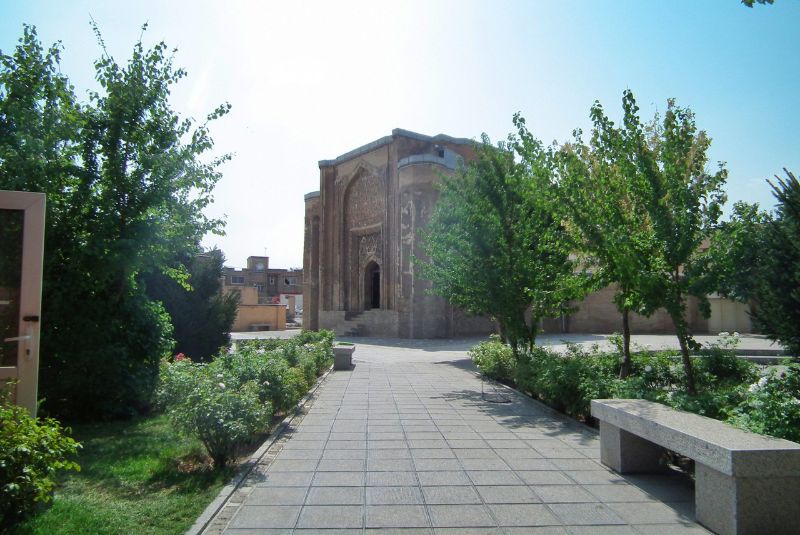
To reach the Alaviyan Dome from Imam Khomeini Square in the center of Hamadan, head towards Imamzadeh Abdullah Square. You can use Baba Taher Boulevard for this purpose. From Imamzadeh Square, turn right onto Alaviyan Boulevard.
The Alaviyan Dome is located approximately 300 meters from the square. This route will take you directly to the historic site, allowing you to easily explore its unique architectural features and rich history.
Best Time to Visit the Alaviyan Dome
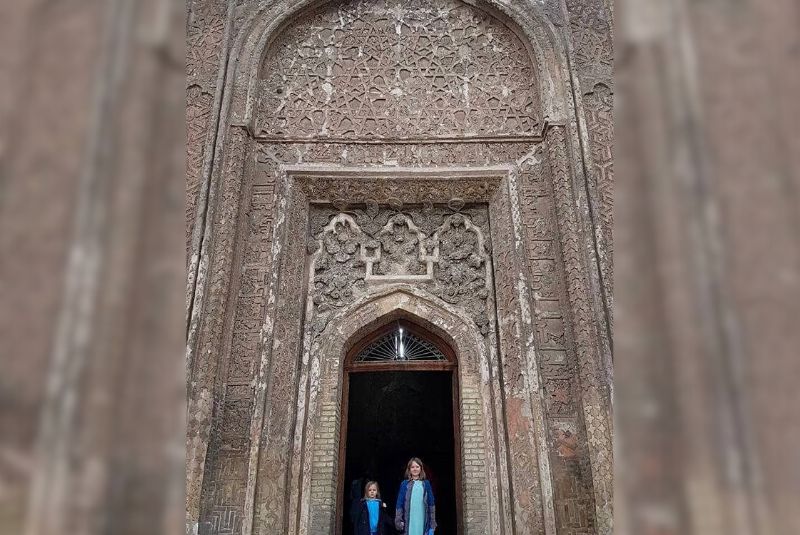
Given that Hamadan is a cold and mountainous city, it's best to plan your visit to the Alaviyan Dome during the warmer months. Spring and summer are ideal for exploring the city and its historic sites, including this remarkable dome. For the most enjoyable experience, visit during daylight hours to fully appreciate the Alaviyan Dome's architectural beauty and the lush surroundings.
Opening Hours
The Alaviyan Dome is open to visitors daily from 9:00 AM to 5:00 PM
Ticket Price
For domestic tourists, the entrance fee is 40,000 IRR. Foreign visitors are charged 400,000 IRR.
Tourist Attractions Near the Alaviyan Dome
While the Alaviyan Dome's stunning beauty and remarkable architecture are a major draw, visitors to this historical site can also explore other nearby attractions in Hamadan. Here are some of the most notable places to visit close to the Alaviyan Dome:
Baba Taher's Mausoleum
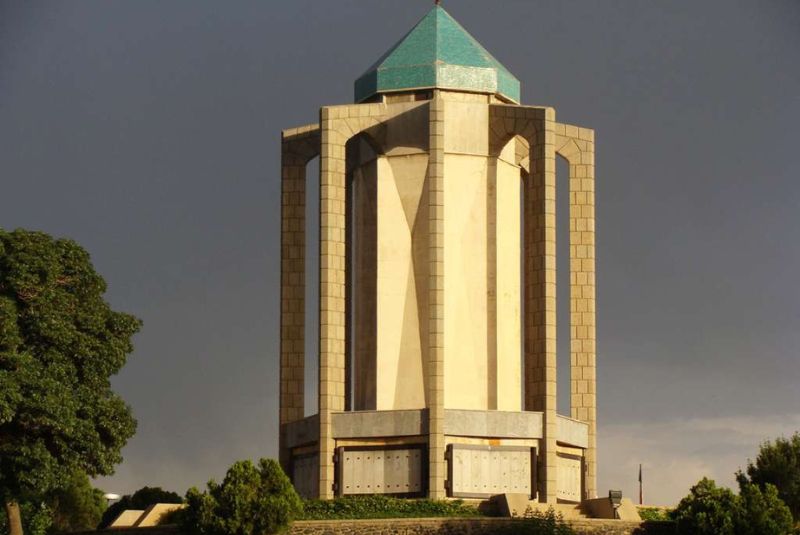
The Baba Taher Mausoleum, with its turquoise eight-sided dome, was originally constructed in the 5th century AH (11th century AD) and has since been refurbished.
This historic monument is significant in terms of history, literature, and architecture, drawing numerous tourists from around the world each year. Its unique structure and cultural importance make it a must-see for anyone visiting Hamadan.
Imamzadeh Abdullah
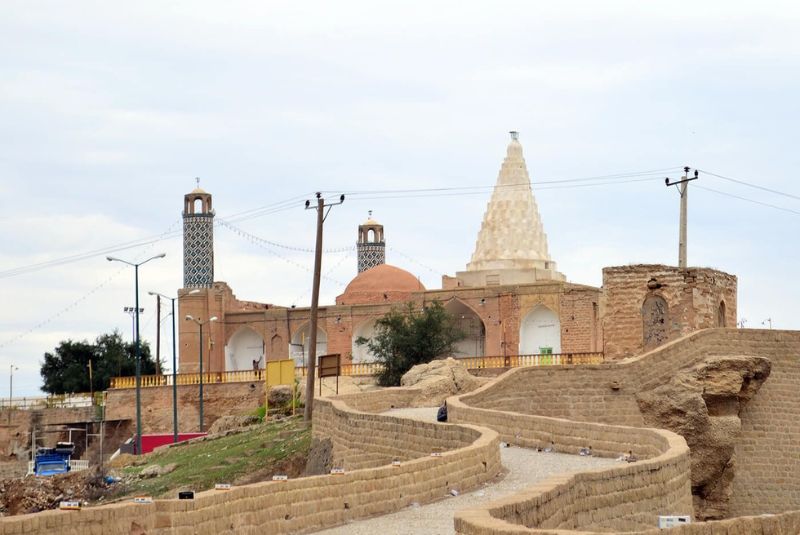
This religious site, built in traditional Iranian architecture with a dome and minarets, holds great importance for the people of Hamadan. The Imamzadeh Abdullah is the resting place of two prominent and devout figures from the region.
It serves as a key location for various religious ceremonies and events throughout the year. Located close to the Alaviyan Dome, it is a significant site for those interested in Islamic heritage.
Hamadan Museum (Hegmataneh Museum)
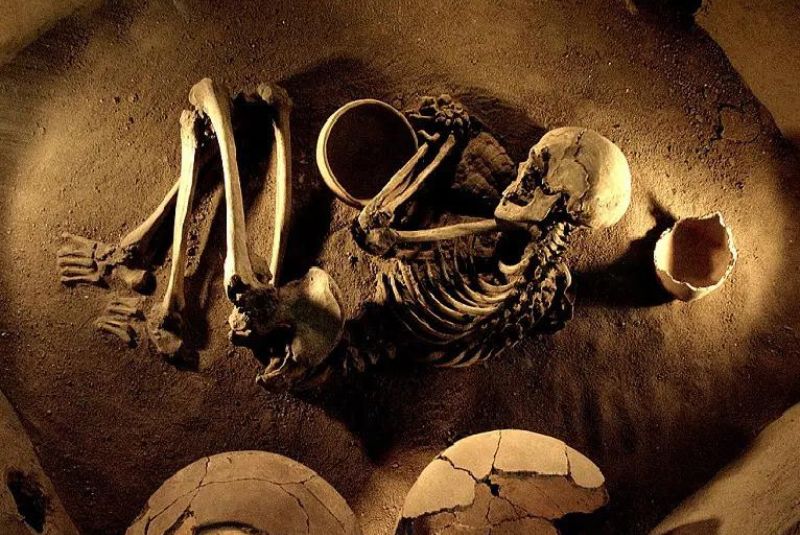
The Hamadan Museum, or Hegmataneh Museum, houses a vast collection of artifacts from ancient Iran, including items from the Medes, Achaemenids, Parthians, and Sassanids. Some of the museum's exhibits date back over 3,000 years.
For those interested in exploring Iran's rich history and culture, a visit to this museum is highly recommended alongside a trip to the Alaviyan Dome. The museum offers a comprehensive look into the region's historical depth and cultural heritage.
Staying in Hamadan to Visit the Alaviyan Dome

If you're planning to explore the Alaviyan Dome and other attractions in Hamadan, there are several accommodation options available to suit your needs. Popular choices include the Baba Taher Hotel, Diamond Novin Residence, Khatam Hotel, Alvand Apartment Hotel, and Setareh Hotel. Each offers comfort and convenience for travelers seeking a memorable stay in the city.
Additionally, there are numerous dining options near the Alaviyan Dome where you can enjoy local cuisine after a day of sightseeing. Restaurants such as Darestan, Pesar Khoob, Traditional Sahab, Benab, Golpayegan, and Bastan offer a variety of delicious dishes to help you unwind and savor the flavors of Hamadan.
Bottom Line
The Alaviyan Dome in Hamadan is a mesmerizing example of Persian architecture, reflecting the rich history and artistry of medieval Iran. Constructed in the 12th century during the Seljuq dynasty, it originally served as a mosque topped with a grand green dome.
Today, it functions as a mausoleum housing the tombs of prominent Alavian family members. Despite the collapse of the original dome, the structure’s intricate stucco work and architectural charm continue to captivate visitors.
Listed as a national heritage site since 1932, the Alaviyan Dome remains a significant cultural treasure. Its exquisite design, including floral motifs and detailed stucco, offers a profound glimpse into the era's craftsmanship.
Nearby attractions like Baba Taher Mausoleum, Imamzadeh Abdullah, and the Hamadan Museum enhance the visit, making it a must-see destination in Hamadan. For more information on tours, tickets, and accommodations, contact us today!
Share your story!
Comment below and let us know about your Experience.
Your story inspires others!


Comment
Leave a Comment